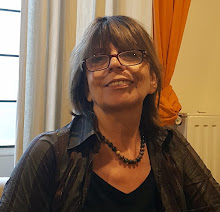It is a very challenging approach regarding the coaching process,
because the listening is important for both
empowering the client and asking question
to enlarge her/his frame of reference.
Daniel Kahneman speaks about the difference between
experience selves (ES) and remembrance selves (RS).
„The ES lives its life continuesly, it has moments of experience – one aftter the other. (..)The RS defines a story - the story the memory delivers for us, and is also true that we make up changes, significant moments and endings, endings are very very important. (..)”
When asking a question are you – as a coach -
experiencing your living-in-the present self or
you are preparing a story for your remembrance self?!
When answering a question is the client experiences
the living-in-the-present self
or he is preparing a story for her/his remembrance self?
Of course, there are 4 possible positions in a coaching session
ES (coach) & ES (client)
ES (coach) & RS (client)
RS (coach) & ES (client)
RS (coach) & RS (client)
Which of these is the most appropriate –
given the mandatory need of authenticity in coaching?!
Is it about a dynamic movement through it?
Clients came in coaching because of RS.
The problem is in the (recent) past,
therefore it has all the RS’characteristics.
Oups. Is coaching about the mastery of producing
better endings for your RS?!
That specific approach of coaching of ’using the present situation’
is working on the mechanism of making-up RS on the spot –
therefore better use their ES.
So, maybe ES-RS*ES-ES*ES-RS*ES-ES
could be a good secquence, quite similar to GROW model.
As it is obvious, the coach must stick with his ES!
Hm. By ending this way, am I working at my own happy RS? :)
All in all, Nestworking approach in helping people to master their life
has this very achievement: at the end of the workshop they are happier!
Because Nestworking is a true learning tool - its about new perspectives, not about plane learning new facts - as Kahneman himself stated:
Here you are some transcripts from the video I was writing about in the beginning of this article:.
”The psychological present is set to be about 3 seconds long. In a lifetime there are about 600 millions of them.(..)Most of them don’t live a trace, most of them are completely ignored by the RS, and yet somehow you get a sense that they should count, that what happens in these moments it is our life.
The biggest difference between ES and RS is in the handling of time.RS is the one who has decisions. We actually don’t choose between expriencess, we chose between memories of experiences.
We think about the future as anticipated memories, not as about experiences. (..)
The two selves bring up to notion of happiness. (..)RS: It is not about how happily that person live it is how satisfy or pleased that person is when that person thinks about her life. (..)
The main lesson is: you can know how satisfied is somebody with their life, and that really doesn’t teach you much about how happily they live their life. And vice versa. (..)”
Watching the video further you will find out which is the turning point for happiness in terms of USD – for USA population :)





